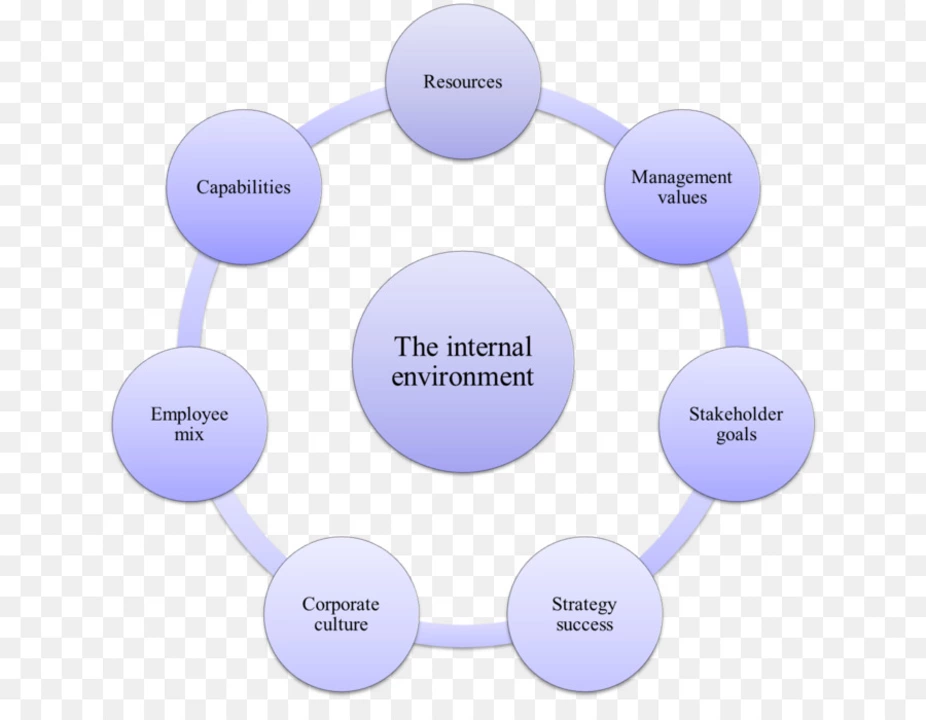When it comes to business, understanding the external micro environment of your company is key. The external micro environment is made up of all of the external elements that can affect a business’s performance and operations. This includes customers, suppliers, competitors, the public, and other external stakeholders. Each of these elements has an impact on the way a business operates and can affect its success.
Customers, for example, are an important part of the micro environment. They are the people who purchase a business’s products or services, and their buying decisions can have a major impact on the company’s bottom line. Suppliers provide the materials and services needed to make and sell products, and their prices and availability can also have an impact on a company’s profits. Competitors, meanwhile, can provide direct competition for a business’s products or services and can affect pricing, customer loyalty, and profitability. The public, including the media and the government, can also have an impact on a business’s operations.
It is important for businesses to understand the external micro environment and how it can affect their operations. By doing so, they can anticipate potential changes and make the necessary adjustments to stay competitive. This understanding can also help businesses identify opportunities to improve their operations and stay ahead of their competition.
The external micro environment of a business consists of a variety of external factors that have the potential to impact the performance and operations of a business. These external factors can be divided into two categories: micro and macro. The micro environment consists of factors that are close to the business and have a direct impact on its performance and operations. This article will explore the components of the external micro environment and how they can affect a business.
First, let's look at the economic environment. This includes factors such as economic growth, inflation, interest rates, and the level of unemployment. These factors can have a direct impact on a business by affecting the cost of doing business, the availability of resources, and the level of demand for its products or services. For example, if economic growth is low and unemployment is high, businesses may find it difficult to attract and retain customers.
The social environment is another key element of the external micro environment. This includes factors such as cultural values, lifestyles, and preferences. Understanding the social environment can help businesses better understand their target market and develop products or services that meet their needs. For example, if a business is targeting younger consumers, understanding the latest trends and preferences can help them create products or services that will be attractive to this group.
The technological environment is also an important part of the external micro environment. This includes factors such as the advancement of technology, the availability of new technology, and the speed at which technology is changing. Technology can have a significant impact on a business by increasing the efficiency of operations and providing access to new markets. For example, businesses that adopt new technologies may find that they can reduce their costs, increase their productivity, and open up new opportunities.
Finally, the political environment is another element of the external micro environment. This includes factors such as government regulations, trade agreements, and political stability. Understanding the political environment can help businesses understand the potential risks and opportunities associated with operating in a particular country. For example, if a business is operating in a country where the government is unstable, it may need to take extra precautions to protect its assets and operations.
Overall, the external micro environment consists of a variety of external factors that have the potential to impact the performance and operations of a business. Understanding the components of the external micro environment can help businesses better understand their target market and develop strategies to better respond to changes in the environment.
The external micro environment is a powerful tool for businesses to understand and take advantage of. Knowing the external micro environment can help businesses identify opportunities and threats, as well as help them make better decisions on how to navigate their operations. In this article, we’ll discuss the benefits of understanding the external micro environment and how businesses can use it to their advantage.
Identifying Opportunities
One of the major benefits of understanding the external micro environment is the ability to identify and seize opportunities. Knowing the external micro environment helps businesses understand the current trends, customer behaviors, and industry changes. With this knowledge, businesses can spot new opportunities and capitalize on them before their competitors do. This can help businesses stay ahead of the competition, as well as give them a competitive edge.
Understanding Threats
Another major benefit of understanding the external micro environment is the ability to identify and address potential threats. Businesses can use the external micro environment to spot potential threats and take corrective measures to protect themselves. This can help businesses prepare for potential risks and take proactive steps to mitigate them.
Making Better Decisions
Finally, understanding the external micro environment can also help businesses make better decisions. By understanding the external micro environment, businesses can spot potential problems and make informed decisions to address them. This can help businesses avoid costly mistakes and ensure they are making the right decisions for their business.
Understanding the external micro environment is a powerful tool for businesses to capitalize on. By understanding the external micro environment, businesses can identify opportunities, understand threats, and make better decisions. This can help businesses stay ahead of the competition and ensure they are making the right decisions for their business.
The external micro environment comprises of the dynamic forces in the immediate environment of an organization that affects its decision making and performance. It is highly variable and changes constantly, so organizations must be prepared to respond to these changes in order to remain competitive and profitable. The external micro environment includes macro factors such as competitors, customers, suppliers, government, industry structure, economic and technological trends.
Competitors are the most important factor in the external micro environment. Organizations must understand their competitors’ activities and strategies to remain competitive. This includes understanding their pricing, product offerings, marketing strategies, and the competitive advantages they have.
Customers are also a key factor in the external micro environment. Organizations must understand the needs and wants of their customers and ensure that their products and services meet or exceed those expectations. Organizations must also understand their customers’ buying habits and preferences in order to accurately target their marketing and promotional efforts.
Suppliers are another important factor in the external micro environment. Organizations must ensure that they have reliable suppliers that can provide quality products and services at a competitive price. Organizations must also be aware of their suppliers’ capabilities and limitations and ensure that their supply chain is well managed.
Government regulations and policies are also important factors in the external micro environment. Organizations must be aware of the laws and regulations that affect their industry and ensure that they are in compliance. They must also be aware of changes in policy that could affect their operations and take steps to remain compliant.
Finally, the industry structure and economic and technological trends are important factors in the external micro environment. Organizations must be aware of changes in the industry structure, such as consolidation or the emergence of new competitors, and the impact these changes have on their operations. They must also be aware of economic and technological trends and take steps to remain ahead of the competition.
The external micro environment is constantly changing and organizations must be prepared to respond to these changes in order to remain competitive and profitable. Understanding and responding to the various factors in the external micro environment is essential for organizations to succeed in today’s global marketplace.

